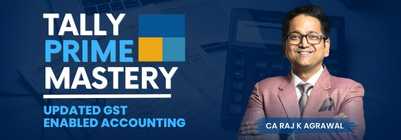Equity or debt, where to put your money? Remember these 3 things to generate best return from portfolio Rather than being swayed by short-term market movements, investors need to focus on maintaining appropriate asset allocation through market cycles. While the allure of equity markets during bull runs is understandable, the role of fixed income in creating long-term wealth cannot be overstated
Dhirendra Kumar
His writing lives and breathes Personal Finance
For years, I’ve observed and written about a distinctive trait in Indian investors—the overwhelming preference for fixed-income investments. It’s fascinating how deeply ingrained this tendency is in our financial DNA. Walk into any middle-class Indian home, and you are likely to find carefully preserved bank deposit certificates, PPF accounts, and post office schemes. These fixed-income instruments have been passed down as a de facto choice for savings, much like a family tradition. While I’ve consistently emphasised the importance of equity investments for long-term wealth creation, particularly through equity mutual funds, this fixed-income mindset continues to dominate our investment landscape.However, the investment scape has witnessed a significant transformation in recent years. Armed with readily available information and easy-to-use trading platforms, young investors are increasingly gravitating towards equity. While this shift from ultra-conservative investing is welcome, the pendulum may have swung too far. Many young investors are now allocating 100% of their portfolios to equity mutual funds, a strategy that carries substantial risks.
The recent market behaviour serves as a timely reminder of these risks. Since late September, the Indian stock markets have experienced a roughly 10% decline, causing anxiety among investors. Though the decline appears to have halted and shows signs of reversal, this volatility underscores a fundamental principle of investing—importance of diversification through proper asset allocation.
Investment success relies on understanding and implementing key concepts, primarily asset allocation and regular rebalancing. Asset allocation involves dividing investments between equity and fixed income in proportions that align with one’s risk tolerance and financial goals. While equity offers higher potential returns with greater volatility, fixed income provides stability and steady returns. The art lies in finding the right balance between these two fundamental asset classes.
Let’s re-examine the basics. There are three primary methods to generate returns from investments: earning interest by lending money, participating in business ownership through shares, and benefitting from asset appreciation, as seen in real estate or gold. A well-structured portfolio typically incorporates all these approaches, with fixed income as the stabilising force.
The beauty of maintaining a fixed percentage balance between equity and debt lies in its inherent discipline. When equity markets surge, periodic rebalancing naturally moves some profits to fixed-income investments, protecting gains. Conversely, during market downturns, rebalancing prompts buying equity at lower prices. This systematic approach helps avoid emotional decision-making, often the biggest enemy of investment success.
The case for including fixed income in every portfolio remains strong. Even for aggressive investors, fixed-income allocation is a crucial shock absorber during market volatility. Hybrid mutual funds offer a convenient way to maintain this balance, automatically managing the allocation between equity and debt. Within the fixed-income spectrum, PPF continues to hold its appeal.
Despite its long lock-in period, the combination of tax savings during investment, tax-free returns, and government backing makes it an attractive option.
The recent market correction reinforces these timeless investment principles. Rather than being swayed by short-term market movements, investors need to focus on maintaining appropriate asset allocation through market cycles. While the allure of equity markets during bull runs is understandable, the role of fixed income in creating long-term wealth cannot be overstated.
Ironically, while I lamented how Indians were too conservative with their investments, I now advocate the fixed-income instruments I once criticised. But there’s no contradiction; the key lies in balance. I still maintain that equity is crucial for long-term wealth creation, but my concern has shifted from too little equity to, in some cases, to too much of it. The truth lies somewhere in the middle. It’s not about avoiding fixed income altogether; it’s about finding that sweet spot where both fixed income and equity work together to build lasting wealth.
The Author is CEO, VALUE RESEARCH
(Disclaimer: The opinions expressed in this column are that of the writer. The facts and opinions expressed here do not reflect the views of www.economictimes.com.)
This story originally appeared on: India Times - Author:Faqs of Insurances



























































